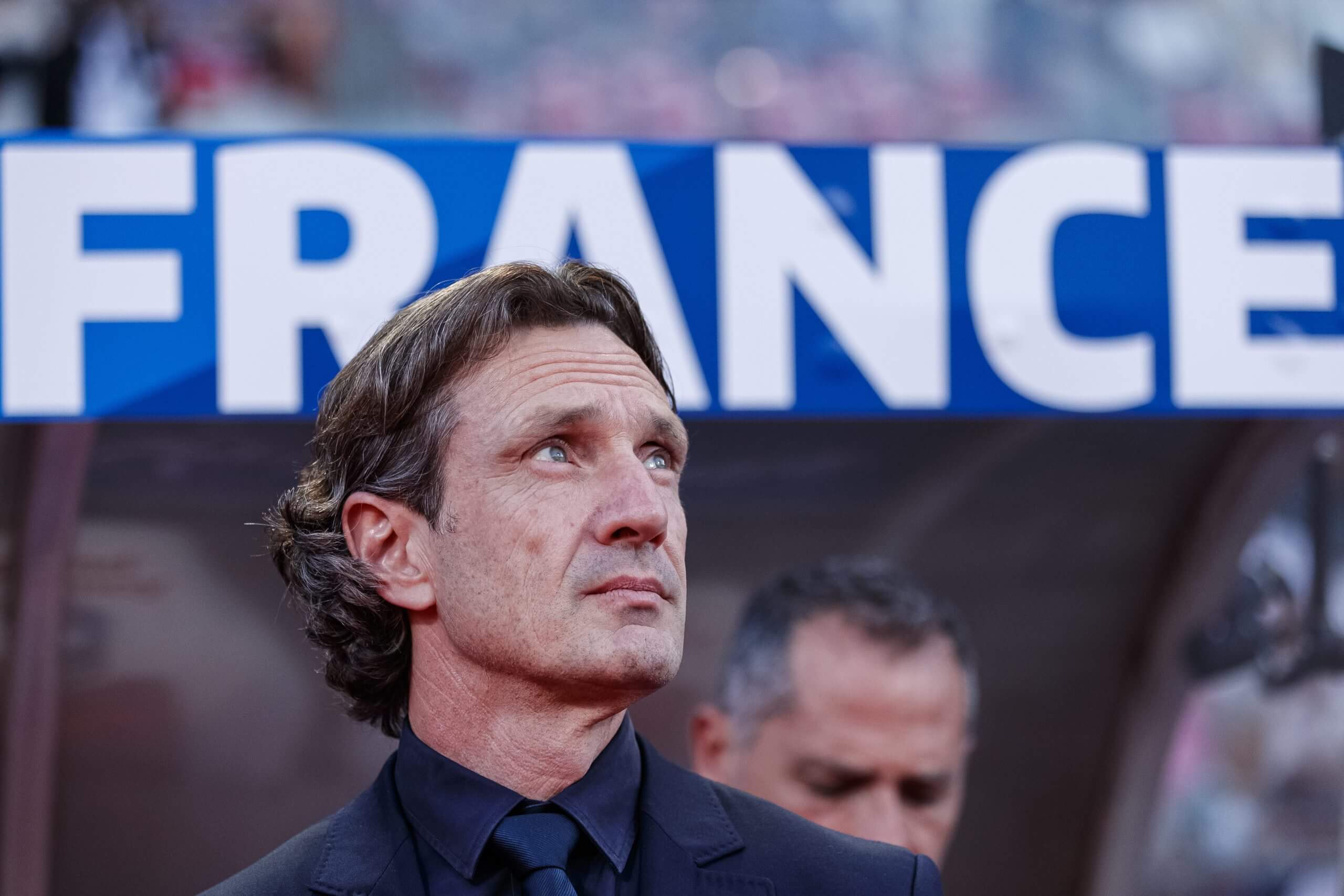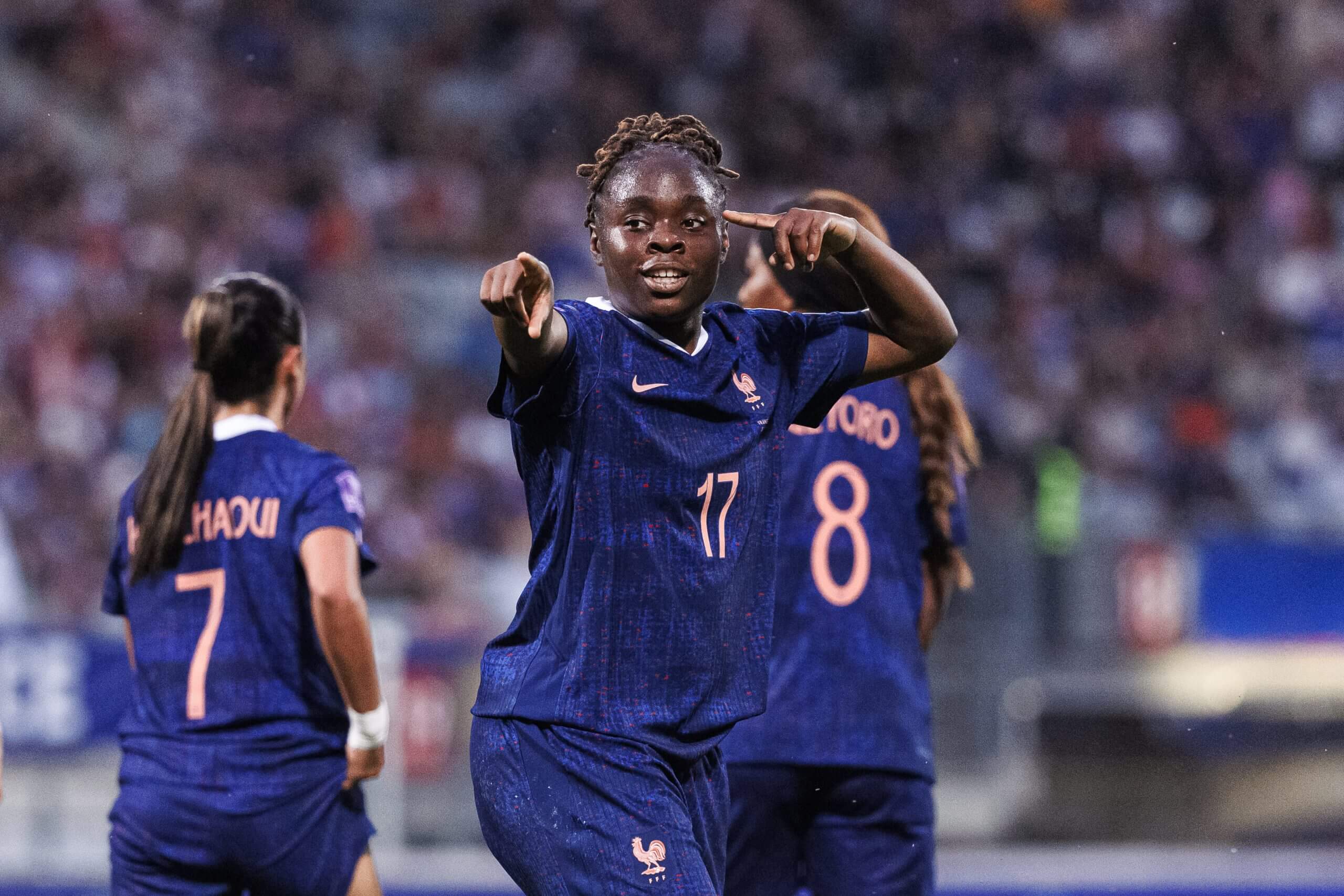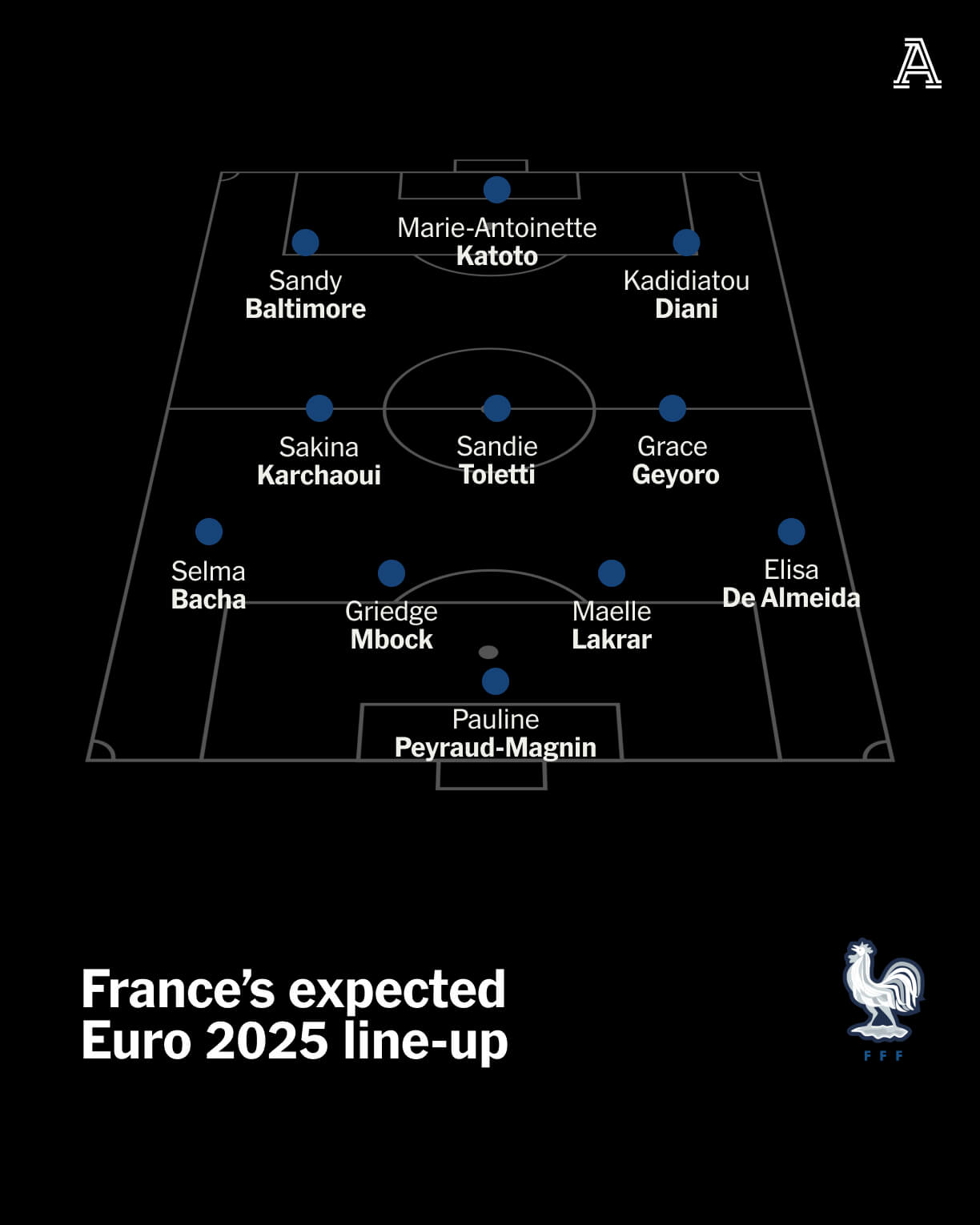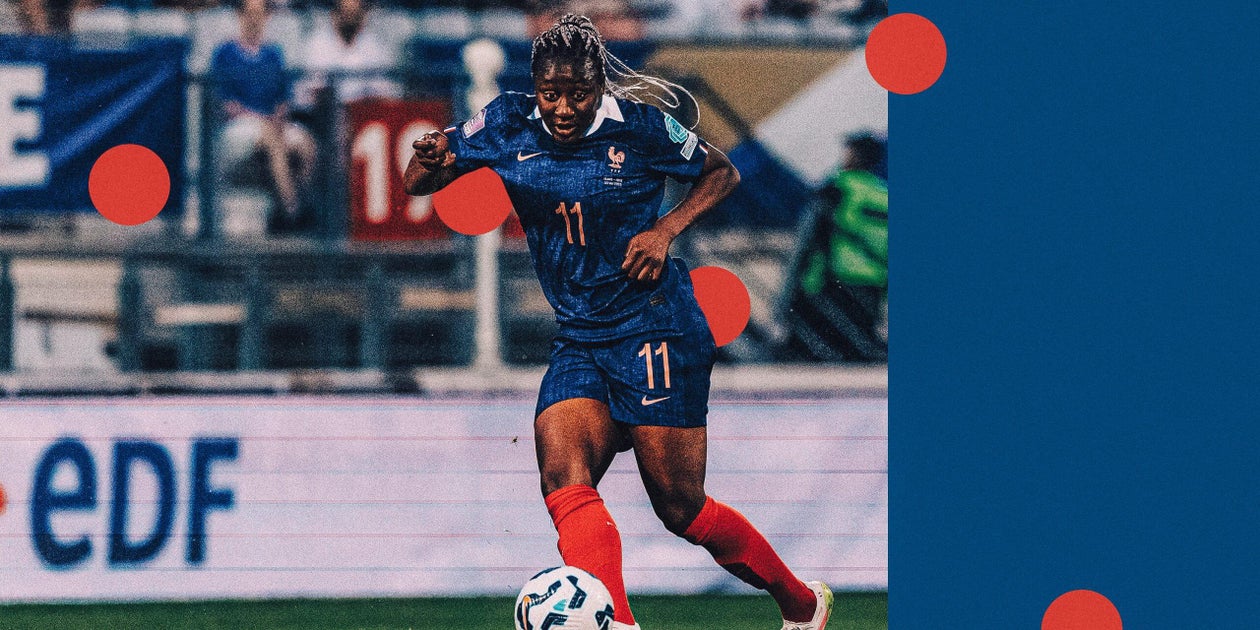France — always in the mix in the major tournaments of the women’s game, yet still without a trophy.
As the 2019 World Cup’s hosts, they lost to eventual champions the United States in the quarter-finals and failed to build a legacy from that tournament.
Corinne Diacre managed them to a Euro 2022 semi-final but was sacked the following March after the French Football Federation (FFF) said the “fracture” between players and hierarchy seemed “irreversible”. Herve Renard brought fresh hope, but left his post last summer after back-to-back quarter-final exits from the 2023 World Cup and 2024 Olympics, which were also staged in France.
Who is the manager?
Laurent Bonadei, who has previously Renard’s assistant, is a man prepared to shake things up, having chosen not to select French legends Wendie Renard (168 caps) and Eugenie Le Sommer (200) for Euro 2025. More on that below.
The 55-year-old stepped up to the top job following the Olympics in August, signing a contract until 2027, with France’s FA saying it wanted a coach familiar with the French national team and women’s football. This is his first senior managerial position, having worked under Renard with the Saudi Arabia men’s national team and then France’s women. He previously coached youth and reserve sides in the men’s game at Paris Saint-Germain and Nice respectively.
Now, his aim is delivering major-tournament success for his country.

Laurent Bonadei will lead France into a tournament for the first time (Sathire Kelpa/Eurasia Sport Images/Getty Images)How do they play?
France set up most often in a 4-3-3 but can also play with a back three. Bonadei wants them to be comfortable in both systems.
At times, Sandie Toletti drops deeper as the single ‘pivot’ (holding midfielder), with creative players Grace Geyoro and Sakina Karchaoui pushing forward as the two ‘No 8s’ (central midfielders).
With the speed of Kadidiatou Diani, Marie-Antoinette Katoto and Sandy Baltimore and the support of full-backs, France can press aggressively to win the ball high up the pitch and launch quick and direct counter-attacks. There is also more pace in the new centre-back partnership of Griedge Mbock and Maelle Lakrar.
France use their width well, especially on the left with Selma Bacha, a front-footed full-back, and Karchaoui, who puts in teasing crosses. They have occasionally lacked efficiency in front of goal, though.
Who are their three most influential players?
Add Baltimore, who is coming off a standout debut season at Chelsea, to the dynamic duo of Bacha and Karchaoui, and you have a terrifying trio on the left side.

Sandy Baltimore won the domestic treble in her first season with Chelsea (Sathire Kelpa/Eurasia Sport Images/Getty Images)
Away from the flair, Paris Saint-Germain captain Geyoro is key to maintaining control in midfield and linking play. Keep an eye on striker Katoto, who was the top scorer at last summer’s Olympics, scoring five goals even as her team only won two of their four games.
What weakness might other teams exploit?
Consecutive quarter-final exits at the World Cup and the Olympics (making it eight defeats at that stage of tournaments for France’s women since 2009) raise the question: can they handle the pressure? Despite an abundance of talent, the French have consistently failed to get the job done. New captain Mbock must create a collective greater than the sum of its parts.
Any notable absentees?
Oh, yes! Bonadei surprisingly omitted former captain Renard, France women’s all-time top goalscorer Le Sommer and San Diego Wave’s Kenza Dali even before their Nations League games a month ago against Switzerland and Iceland. These “historic” players, in the coach’s words, have 444 caps between them.
“As Einstein said, ‘Insanity is doing the same thing over and over again and expecting a different result’,” Bonadei told a news conference in May. “I want different results for this team, so I have gone with a different selection.”
What is their strongest starting XI?

How have they performed over the past 12 months?
After a disappointing performance at their home Olympics under Renard, Bonadei kicked off his tenure with some patchy results: two wins and two defeats, with eight goals scored but seven conceded, including a 4-2 loss to world champions Spain.
Since the turn of the year, they have performed very well, winning all six of their Nations League matches. France conceded just two goals and topped their group, qualifying for a semi-final against Germany in October with two games to spare.
The absences of Renard, Le Sommer and Dali did not seem to rock the boat, and there have been convincing wins in the run-up to the tournament, albeit against a mixed standard of opposition — Switzerland (4-0), Iceland (2-0), Belgium (5-0) and Brazil (3-2).
What are they expected to achieve at these Euros?
When Renard was appointed, he and the FFF agreed on two key objectives: to reach at least the semi-finals at the 2023 World Cup and last year’s Paris-hosted Olympics. Neither happened.
This time around the FFF has avoided setting such ambitions and Bonadei has even called his team outsiders, all with an eye on the 2027 World Cup. Of course, both parties would love to win but realistically reaching the semi-finals would meet expectations.
They face stern opposition in their group: reigning champions England await in the opening game, while their third and final match against the Netherlands could prove crucial to their hopes of progressing to the knockouts. Wales will hardly roll over in the middle game, either.
Did you know?
Katoto has had rotten luck with major tournaments.
The Paris Saint-Germain No 9 was not selected for the 2019 World Cup despite finishing as the French top flight’s leading goalscorer the previous season, then suffered an anterior cruciate ligament (ACL) knee injury in the second group game at Euro 2022 and did not recover from it in time to play in the World Cup a year later.
(Top photo: Getty Images; design: Eamonn Dalton)
